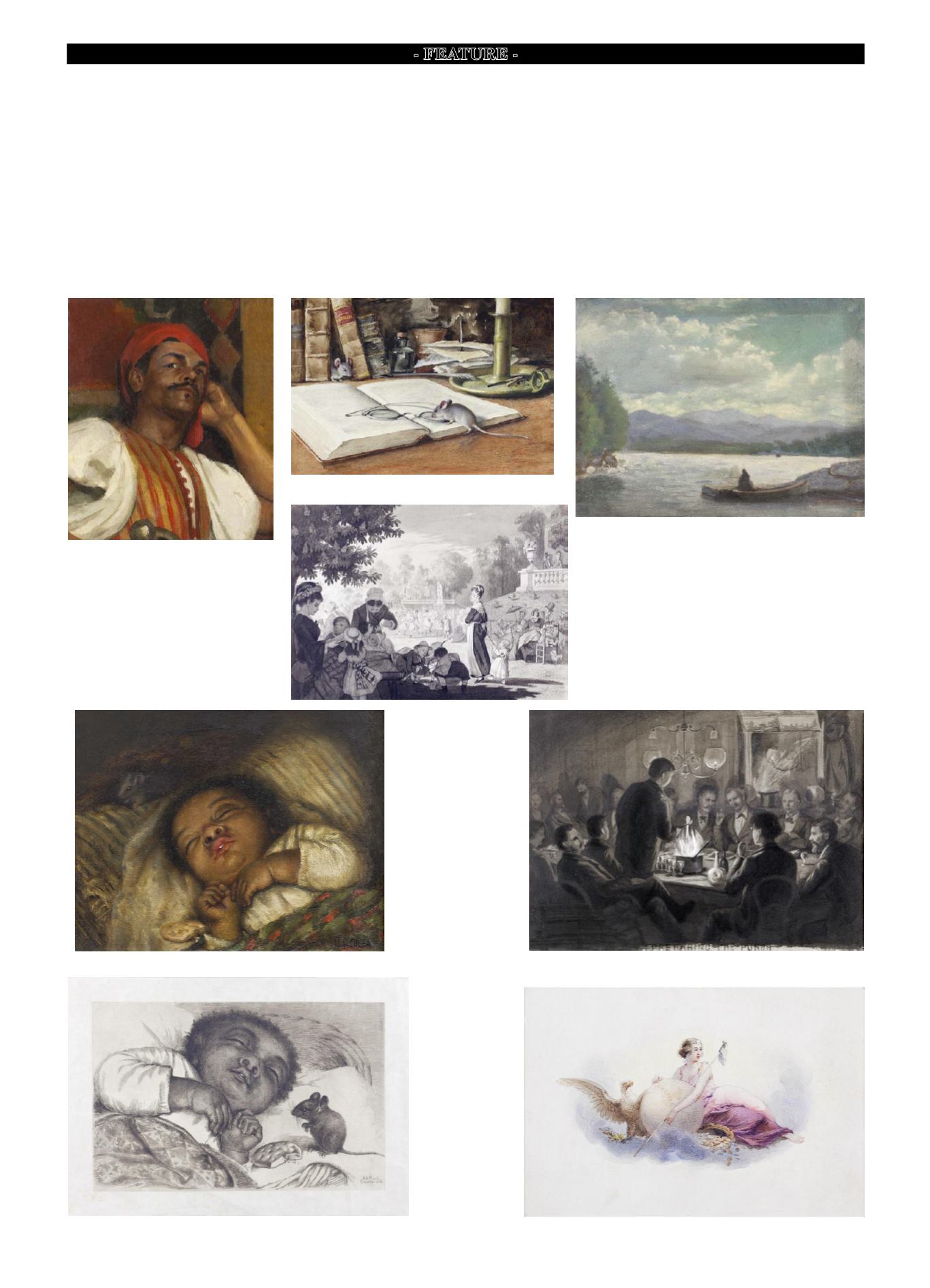

16-C Maine Antique Digest, April 2015
- feature -
bank notes, stocks, and bonds.
13
Plumb
started as an office boy, and his artistic
and personal merits were quickly recog-
nized, He was promoted to staff artist.
14
After Hatch’s death, Plumb moved on
to work for John H. Bufford, the fore-
most commercial lithographer in Boston,
where Winslow Homer had worked in the
1850s. The collection includes Plumb’s
apprenticeship agreement with Hatch
as well as several letters written home
on Hatch letterhead. Accompanying the
documents are three bank note vignettes,
rendered beautifully in pen and ink and
watercolor. The collection includes scores
of drawings of different dates, sizes, and
themes. Taken together, they prove that
Plumb was a highly skilled draftsman
with a remarkable ability for depicting
large groups of people in action and ren-
dering landscape perspective.
During his years with Hatch, Plumb
attended night school at Cooper Union
for four years and the National Academy
of Design for two years. The archival por-
tion of the collection includes a completion
certificate for the course at Cooper Union,
signed by Peter Cooper. With one excep-
tion, Plumb achieved the highest level of
merit. After returning to New York City
from Europe, Plumb joined the faculty at
Cooper Union, teaching freehand drawing
there for more than 30 years. A medal still
in its velvet-lined box, presented to the
artist by Peter Cooper’s daughter Sarah
Hewitt for his many faithful years of ser-
vice, is another treasure.
Other noteworthy archival material
includes photographs of the artist and
his family, several of them housed in an
album covered in crushed velvet. The
album also preserves an autographed
carte de visite for Jean-Léon Gérôme.
15
A separately framed oval photograph
presents the dashing young artist in a top
hat, standing on a bridge in Central Park.
Plumb’s business cards and the matching
print plates are part of the collection, as
are his studio sign, watercolor box, oil
paint box, palette, toolbox, and a small
leather trunk with his initials in brass
tacks.
My goal for this remarkable collec-
tion is to organize a scholarly exhibition,
accompanied by a catalog. I aim to bring
Henry Grant Plumb’s art and letters to the
attention of historians and art apprecia-
tors. Because of the many letters that need
transcription and the research required
to reconstruct Plumb’s life and career,
this will be a multiyear project. Thanks
to luck and good connections, I already
have a verbal commitment from the Sal-
magundi Club to host my Plumb exhibi-
tion.
16
I hope for two other venues, at least
one in upstate New York near the artist’s
home town.
17
As a hybrid scholar-dealer, I
plan to sell a number of the drawings and
paintings but will ultimately donate a sig-
nificant portion of the material to public
institutions, where it will be available for
consultation and enjoyment by the public.
Stay tuned for much more about Henry
Grant Plumb. Who knows, perhaps down
the road
M.A.D.
will even publish a notice
of my Plumb exhibition.
Untitled, oil on canvas, 9½" x 8", 1874-78.
Untitled, watercolor on paper, 1880s, 8" x 12", sight.
Park Luxembourg,
Paris,
1874-78, watercolor on
paper, 10" x 14".
Lake Champlain from Basin Harbor
, 1910-20, oil on artist’s board,
9¼" x 12¼".
Pickaninny
, circa 1884, oil on canvas, 10" x 12".
Pickaninny
, engraving, 1884, 8½" x 11½".
Preparing the Punch: Latin Quarter Sketch Club
,
1875, watercolor on paper, 10" x 13½", sight.
Vignette for a bank note or certificate, 1860s, watercolor on paper, 3 7/8" x 5 5/8".










